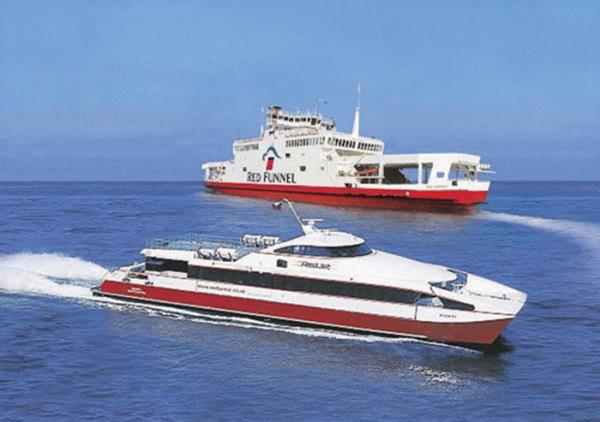11 April 2017

Red Funnel Ferries
Each year, Red Funnel Ferries carries nearly 3.5 million passengers between Southampton and the Isle of Wight.
Its fleet comprises six vessels: three high-speed catamarans for foot passengers take 25 minutes to travel the 11 miles between the city and West Cowes, while three conventional ships, which carry both foot passengers and vehicles, make the journey to East Cowes in 60 minutes.
Having made the decision to offer customers high-speed internet access on board, Red Funnel knew that demand would be high – at any one time, more than 3,000 people would be travelling, with peaks during events such as the Isle of Wight Festival.
TrellisWorks, which has worked for Red Funnel for a number of years, carried out site surveys and field trials and then installed eight base stations on shore and six antennas on each of Red Funnel’s vessels.
It used the InfiMan 2x2 point-to-multipoint radio device from fixed wireless broadband specialist InfiNet Wireless, coupled with the vendor’s InfiMux switch designed for moving vessels.
TrellisWorks says multiple wireless connections ensure “make before break” – as the signal weakens with distance, a second radio connects the next base station before the initial connection drops. It adds that the client radios provide 100Mbps throughput, with a minimum of 20Mbps full duplex.
As a backup, and for when vessels were not ready for radio installation, TrellisWorks installed Pepwave wireless routers from US company Peplink.
Using SIMs from a number of networks for both 3G and 4G services, TrellisWorks says these routers are able to seamlessly take over in case of a fault with the radio link with no noticeable effect for users.
In a separate project, Red Funnel upgraded its CCTV system which covers five sites.
Here, TrellisWorks chose IP-based cameras from Axis, a Swedish company. The vandal proof models feature mini-dome designs and fish-eye 360º lenses, both for indoor use, and external, static devices including one for ultra low light conditions.
In all, 110 cameras were installed and connected to one of three recording sites by cable or – where not possible and to save costs – by wireless link.
Images from each major group of cameras are stored on a Hewlett Packard server with UPS backup. TrellisWorks chose qulu, from Vista, as the platform to control live image viewing and playback.








